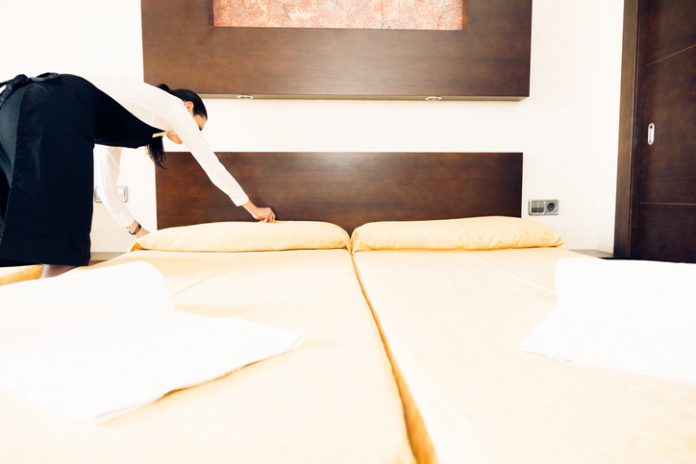
Summer has arrived, ushering in the season of booming bookings and occupancy rates. It can also bring unwanted guests: bed bugs. According to the National Pest Management Association’s 2018 Bed Bugs Without Borders study, “More than half of pest control professionals noted that they receive the most bed bug complaints during the summer, as increased travel during this time of the year may help spread bed bugs.”
While hotels may see a summer spike in bed bug activity, these blood-sucking pests are hardly a problem isolated to warm weather months. Because they are hitchhiking pests that stow away on luggage, personal belongings, and people, it is nearly impossible to prevent bed bugs from being introduced to a property. However, a hotel can develop a line of defense by arming its housekeeping staff to help with daily inspections for bed bugs.
A Five-Point Plan for Housekeeping Bed Bug Inspection
Since housekeeping staff frequent guestrooms on a daily basis to clean, they are the first line of defense in performing surface-level bed bug inspection without disrupting guests or adding significant time to room cleaning services. Using a simple, five-point approach makes it easy for staff members to do a quick inspection in each room.
In each of these areas, look for evidence of bed bugs, which can include live or dead bugs, cast skins, and fecal stains. Eggs may also be present in some areas.
- Mattress and sheets. Small blood spots or smears on sheets may indicate bed bugs have been feeding. Carefully inspect the mattress seams, creases, edges, folds and tufts, areas around zippers, and tags. Also, lift up and look under the mattress.
- Box spring. Just like the mattress, check seams, creases, edges, folds, tufts, and tags.
- Bed frame. Check slats, rails, or platforms.
- Headboard. If it is easily removed from the wall, inspect the wall behind the headboard and the back side of the headboard, as well. If not, inspect any cracks or crevices, along the edges, or in any intricate designs.
- Floor and baseboard covering. Inspect the floor and baseboard coverings under and behind the bed.
More Thorough Inspections on a Rotational Basis
Maintenance staff can also be trained to perform deeper and more thorough inspections when rooms are out of service, in need of repairs, or on a regular rotation basis. Pest management companies can also perform this service; some may even use canines to perform quick, accurate, and discreet inspections.
In addition to the five-point approach used by housekeeping, a more thorough inspection should also look at the following areas for the same signs of bed bug activity.
- Upholstered seating. Inspect the seams, in furniture crevices, and inside cushion covers of sofas and chairs, as well as the edges, folds, and under and removable lids of ottomans or stools. Carefully inspect throw pillows, particularly zipper areas.
- Wardrobes and dressers. Open doors and drawers and inspect along the seals. Look closely at furniture joints. Check the floor where furniture and carpet meet, looking for live or dead insects. Inspect along baseboard coverings near these furniture items.
- Nightstands and wall fixtures. Since many of these items can be found near the bed, bed bugs can move to them quickly. Open nightstand drawers and inspect the drawer joints, furniture cracks, and crevices. If a Bible or books are in the drawers, open them, give them a shake. Check the edges of lamps, alarm clocks, or other decorative items and fixtures, and look closely at any area where power cords or “vents” are present. Bed bugs can wedge themselves into spaces thinner than credit card thickness, so look at the edges of outlets and the sockets for any signs. Check the edges of frames, the wall underneath, and the backside of hanging wall art and photos.
- Closet. Inspect the closet floor and the entire luggage stand—especially where the webbing wraps around the frame—for live insects, cast skins, and eggs.
Protecting the Brand With Preventative Action
The old saying “an ounce of prevention is worth a pound of cure” holds true with bed bugs. Bed bug encounters can disrupt a guest’s stay, lead to negative reviews, unwanted media attention, and litigation. A few minutes spent on inspection could reveal a potential bed bug issue before it has the opportunity to impact guest experience or become a costly full-blown infestation.











